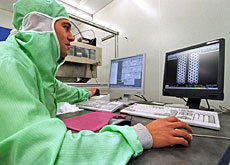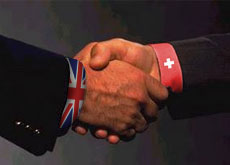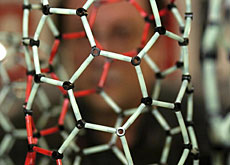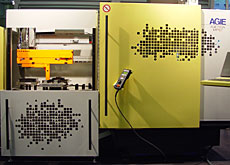The importance of explaining nanotechnology

The science of nanotechnology could founder on the same negative publicity that dogged genetics unless more is done to assess risks, a Swiss report warns.
Researchers from the Federal Institute of Technology in Zurich found a lack of guidelines and effort to identify potential side effects, but the Swiss authorities are working to redress the problem.
Only two of the 32 companies in Switzerland and Germany surveyed by the institute had investigated the effects of absorption of nanoparticles by living organisms. Three-quarters admitted they had not carried out risk assessments on research or on their products.
One in five had examined whether products containing nanoparticles could be toxic while a quarter did not know whether tests had been carried out.
Nanotechnology involves the manipulation of atoms and molecules, at dimensions of roughly one millionth of a millimetre, to change a structure’s properties. This science has already been used to produce scratch-free paint, wrinkle- and stain-resistant fabrics, sun lotions, skis and photographic paper.
It can also be applied to medicine and food products. For example, nanocapsules could be used to release drugs into the bloodstream or different flavours onto a pizza depending on the temperature of the oven.
But very little research has been carried out internationally to determine the effects of nanotechnology on people or on the environment.
No guidelines
Part of the problem, according to Michael Siegrist, a researcher at the institute, is a lack of guidelines in Switzerland and many other countries to regulate the industry.
“One reason for this lack of risk assessment is that companies and researchers do not know what they should do. There are no industry standards or government regulations yet,” he told swissinfo.
“It is also difficult to find qualified people to carry out assessments even if a company has the money and the will to do so.”
Siegrist added that the nanotechnology industry in Switzerland realises that it is in its own interests to carry out proper risk assessment but it favours self-regulation as opposed to government interference.
Public ignorance
The Federal Institute of Technology in Zurich carried out an accompanying study of public attitudes to nanotechnology, asking nearly 900 people for their views. The findings concluded that people are happy to use products such as skis, but were not so keen to consume nanoparticles or put them on their skin in the form of sun lotion or cosmetics.
Siegrist fears that the public will reject some forms of nanotechnology unless more testing is carried out and the results made transparent.
“We found that lay people perceived more risks than the experts,” he said: “The problem with this is that we might end up in the same situation as we had with gene technology.”
Siegrist believes communication and targeted marketing are the keys to the industry’s success.
“If the industry resists making claims they cannot fulfil and provides applications that are useful to consumers, then we could avoid the problems we had with GM [genetically modified] food,” he said.
“People are more prepared to accept potential risks of mobile phones than they are with GM tomatoes that have a longer shelf life.”
Action plan
The Swiss Environment Office and the Federal Health Office are working on an action plan to identify and coordinate the currently unknown level of nanomaterials in Switzerland.
The working group aims to present proposals by the end of the year to set up a national action plan including proposals to for risk assessment and risk management of nanomaterials.
It is also looking into the feasibility of complying with European Union and Organisation for Economic Cooperation and Development (OECD) guidelines.
“The most immediate threat is to the researchers and workers dealing with these nanoparticles,” Georg Karlaganis of the environment agency told swissinfo.
“We need to develop a dialogue with scientists, the industry and the public.”
swissinfo, Matthew Allen in Zurich
The size and scale of the nanotechnology industry is unclear in Switzerland. One reason is that there is no international standard definition of the science, making it hard to determine whether companies use nanotechnology or not.
A 2004 report by the Royal Society in Britain estimated research and development on nanotechnology to be worth some SFr1.57 billion ($1.2 billion) a year in Europe.
This compares with $800 million (SFr1.04 billion) in Japan in 2003, $3.7 billion for a US project lasting from 2005 to 2008 (excluding defence expenditure) and a pledge from the British government to spend $78.5 million a year on nanotechnology between 2003 and 2009.
The EU launched a four-year nanotechnology action plan in June 2005, with the intention of boosting research, creating centres of excellence, coordinating the industry, assessing the potential risks and communicating with the public.
A nanometre is one millionth of a millimetre. The diameter of a human hair is roughly 50,000 nanometres.
Nanoparticles could be used in medicine as tiny drug capsules or to selectively direct treatment to cancerous tissues or to tag antibodies with crystals that show up under ultraviolet radiation.
Nanocapsules could also be used to capture and selectively release flavours into food.

In compliance with the JTI standards
More: SWI swissinfo.ch certified by the Journalism Trust Initiative




You can find an overview of ongoing debates with our journalists here . Please join us!
If you want to start a conversation about a topic raised in this article or want to report factual errors, email us at english@swissinfo.ch.